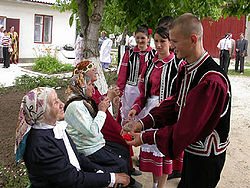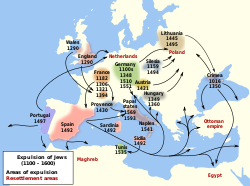Ethnic groups in Europe
The native peoples of Europe are separated by common genetics, common language, or both. It is estimated there are 87 distinct native peoples in Europe, 33 of which form the ethnic majority in their country. The other 54 are minorities in their countries. The Russians are the largest group, with over 134 million.
Languages
Indo-European
Baltic languages: Includes Latgalian, Latvian, Lithuanian, and Samogitian.
Celtic languages: Includes Breton, Cornish, Irish, Manx, Scottish Gaelic, and Welsh.
Germanic languages: Includes Danish, Dutch, English, Faroese, Flemish, Frisian, German, Icelandic, Limburgish, Low Saxon, Luxembourgish, Norwegian, Scots, Swedish, and Yiddish. Afrikaans, a daughter language of Dutch, is spoken mostly by South Africans and Namibians.
Iranic Languages: Ossetian in the Caucasus, and Kurdish in Turkey.
Romance languages: Includes Aromanian, Arpitan, Catalan, Corsican, French, Friulian, Galician, Istro-Romanian, Italian, Ladino, Megleno-Romanian, Occitan, Portuguese, Romanian, Romansh, Sardinian, and Spanish.
Slavic languages: Includes Belarusian, Bosnian, Bulgarian, Croatian, Czech, Kashubian, Macedonian, Montenegrin, Polish, Russian, Rusyn, Serbian, Slovak, Slovene, Sorbian, and Ukrainian
Language isolates: Greek, Albanian, and Armenian.
Uralic
Finnic: Estonian, Finnish, Livonian
Ugric (Disputed branch): Hungarian
Disputed: Mari, Mordvinic, Sámi
No branch: Samoyedic
Ethnic Groups In Europe Media
Simplified model for the demographic history of Europeans during the Neolithic period and the introduction of agriculture
Map of the Roman Empire and barbarian tribes in 125 AD
The Great Migrations of Late Antiquity
Map showing the distribution of Slavic tribes between the 7th–9th centuries AD
Europa Regina (representation of Europe printed by Sebastian Munster), 1570
Ethnographic map of Europe in 1847 by Heinrich Berghaus
Gagauz people in Moldova
Expulsions of Jews in Europe from 1100 to 1600
A Roma makes a complaint to a local magistrate in Hungary. By Sándor Bihari, 1886.









